Easy Knitting Patterns for Beginners

What makes a great “first” knitting pattern? You might think that it’s a super-chunky yarn, or that it doesn’t require using a “purl” stitch, or learning any new skills like increasing/decreasing. However, as long as you’ve done a little bit of practice with casting on and binding off with scraps, you’re MORE than equipped to handle a novice knitting pattern that includes both knits and purls, and even includes some simple shaping. In fact, I’d encourage it! The patterns that are “too” simple run the risk of becoming boring, or not helping you grow as a knitter. It’s the courage to grow your skill set right from the start that will help you expand your craft!
What makes a great first pattern is the opportunity for tons of practice — practice with your knits, your purls, turning work or learning to work in-the-round, and reading instructions that are clean and well-written.
Things to avoid in a beginner pattern are things like cables, colorwork, lace, or brioche — these are all additional knitting techniques that are GREAT… once you’ve learned the basics! First knitting patterns are a place for increasing your skill set, but just as importantly, increasing your confidence!
10 Free Knitting Patterns
So, without further ado, here are 10 simple patterns that would make a phenomenal first project for any knitter!
1. A Simple Cuffed Hat
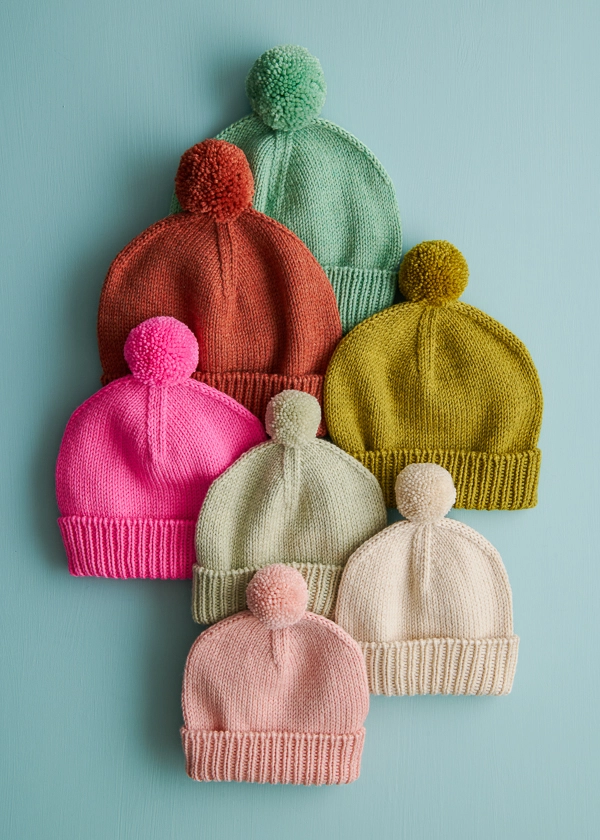
Purl Soho’s Classic Cuffed Hat is perfect for those who want a simple beanie to make for themselves, or a friend, family member, SO, etc., this hat from Purl Soho is everything a first knitting pattern should be! You’ll start off by ribbing (so, using both knit and purl stitches), then move on to a basic stockinette in-the-round body for the hat (space to rest and get used to knitting). The hat is finished off with some simple decreases (learning a new basic knitting skill — check!), and then BOOM! You’ve got a hat! Purl Soho’s patterns are the epitome of well-written, cleanly designed patterns. They’re a great way to get used to the way knitting patterns are (or, should be) written, and often link to tutorials on any new skills. Don’t be intimidated by the price of their suggested yarn — any worsted-weight yarn will work for this pattern!
2. A Seed-Stitched Wrap

Speaking of well-written knitting patterns, KnitPicks’ 15th Street Wrap also does a great job with this! The wrap in this pattern uses a yarn slightly bulkier than I’d normally recommend for a first-time knitter, but the process and product are so lovely, I couldn’t resist! It checks all the boxes — mixes knits and purls, no complex techniques, you learn a new skill by switching over yarn colors. Additionally, I suspect that you could easily turn this from a wrap to a scarf by working on smaller needles, with a thinner-weight yarn like an Aran or Worsted (if you’re feeling brave!).
3. This Broken Rib Hat
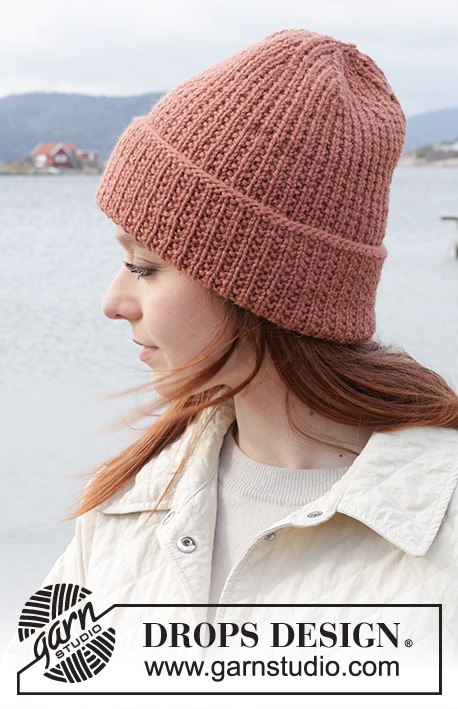
This Brick Lane Hat pattern is an awesome intro to knitting from a chart! The structure is so simple, you can really focus on learning how to read a chart (starting at the bottom, working right-to-left). I also love that this hat uses the simple-but-effective Fisherman’s Rib (a classic knitting texture). This keeps the fabric of the hat interesting as you’re working. Like the Classic Cuffed Hat (or pretty much any hat you make), this will introduce knitters to decreases, which are important if you want to move on to larger projects someday. Overall, this knitting pattern makes for great “TV Knitting,” where you can just let your hands do the work once you’ve learned the rhythm of the stitches. It’s perfect for first-time knitters!
4. A Texture-Striped Cowl
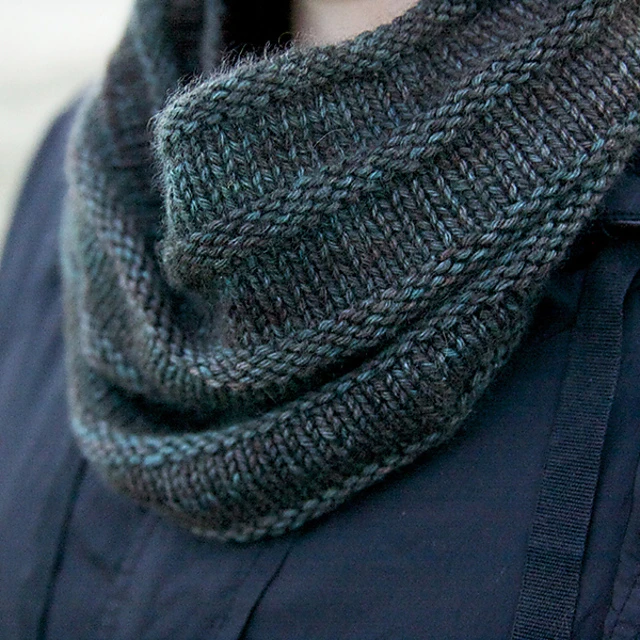
Speaking of simple but effective knitting patterns… check out the Simple Yet Effective Cowl! Tin Can Knits is one of my personal favorite knitwear designers (their Strange Brew sweater formula jumpstarted my side-quest into designing patterns of my own… but more on that another time). This pattern is so short, I thought at first that something had gone wrong when I downloaded it. But nope — it really is just that simple! This pattern will teach new knitters to keep track of their rounds as they knit, which is SO valuable. Especially if you want to get into more complex patterns someday, knowing where you are in your work is crucial! It takes some getting used to, but one day it’ll feel like second nature.
5. My Easy-Peasy Rib Knit Scarf

And now, it’s time for the shameless self-plug! I designed “The” Scarf specifically for first-time knitters — it’s a chance to get used to knitting back and forth while switching between knit and purl stitches, but you don’t need to focus on anything else. There’s no row counting required, no chart you need to read. It’s just the same simple row back and forth, the whole way up the scarf. A benefit to this knitting pattern is that it comes along with a link to my whole set of YouTube videos on getting started with knitting — I’ll teach you how to make the basic stitches, cast on, bind off, and weave in ends.
6. A Patchwork Blanket
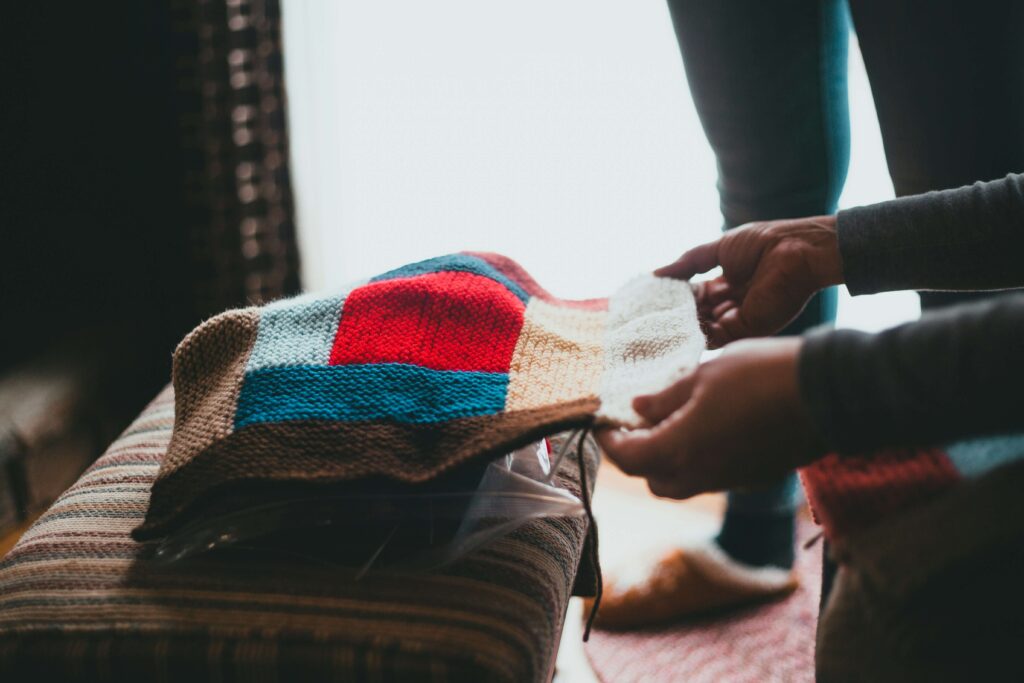
At its core, Yarnspiration’s Harvest Knit Blanket is a VERY simple pattern — you’re working back and forth with knits and purls to make five columns of “patches.” It’s essentially like knitting five scarves, then seaming them together. While the construction aspect may seem intimidating, the internet is your friend. With the help of YouTube and the well-written directions in this knitting pattern, it’s ultra-doable for a beginner! This pattern is a great opportunity to try out different knit-purl textures. You can also get some practice with switching between colors. I strongly encourage you to try a pattern like this that requires some seams early-on in your knitting journey! I waited for years to seam my first project because it intimidated me, but it’s SO simple! All that time I wasted working only with seamless patterns! Learn from my mistakes, go forth, and be brave!
7. A Sampler Scarf
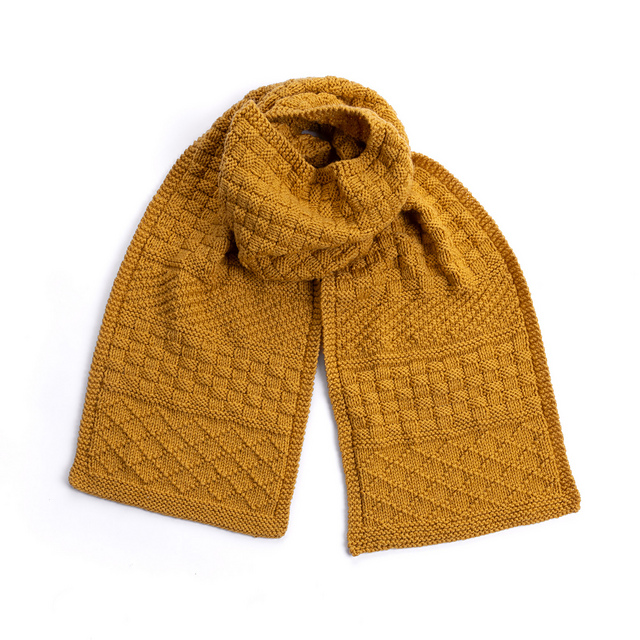
Yarnspiration’s Knit Sampler Scarf seems a little more complex, but it truly is made up of just the basics. You’re getting practice with knits and purls, but once you’ve gone through the samples, you’re repeating them all the way down. This is a great pattern for the ambitious beginner. At the end, you get a product that looks way more advanced than it truly is! What I love about this knitting pattern is that all of the different stitch-styles sampled have directions in written and chart-form. This way, you can get a feel for charts, but you also have the option to read written directions.
8. The Purl-less Scarf
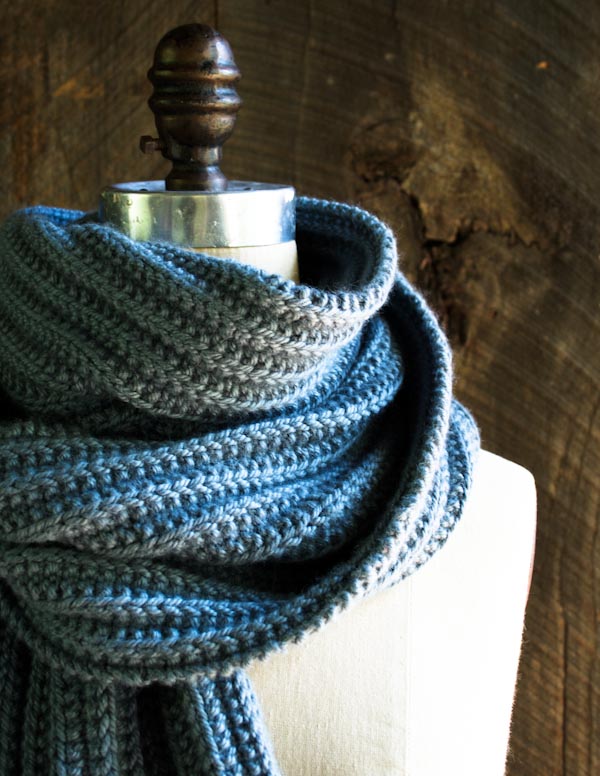
On the other hand, if you’re a not-so-ambitious first-time knitter, and you want to ignore everything I’ve said about being sure to include both knits and purls as you get started, Purl Soho’s No-Purl Ribbed Scarf is the one for you! It requires only that you know how to make a knit stitch — no purling! While it’s not going to push your skill set much, if you’re feeling intimidated, this is a fine starting point. As with all of Purl Soho’s knitting patterns, it’s exceedingly well-written. The photos of the pattern will make you want to knit, like, a thousand of them.
9. Waffle-Knit Legwarmers
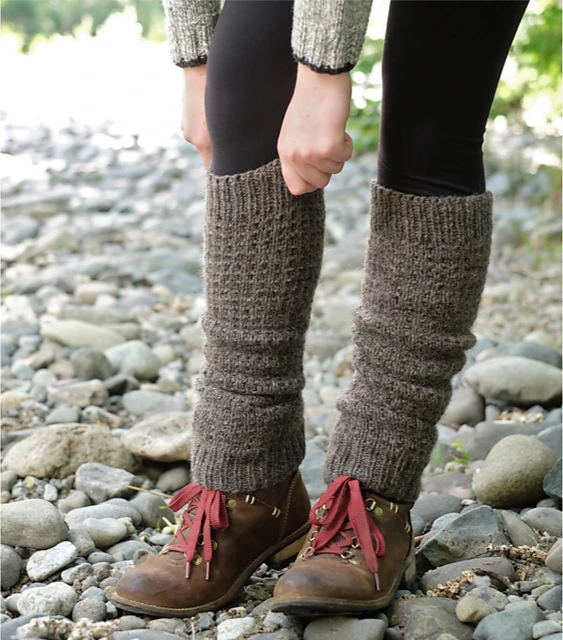
For those looking to land somewhere between the ambitious and the safe, the Olallie Legwarmers are a great compromise! You get a unique, visually-interesting stitch pattern, but you don’t have to switch between different patterns. The combination of knits and purls here helps you understand the difference in tension between the two stitches. In essence, purl stitches will bump out more in vertical contrast with knits; while knits will bump out more in horizontal contrast to purls… that must sound like mambo-jumbo on the page, but when you see it on this project, it’ll click. Once you get the hang of the pattern repeat, you can kind of knit this one on autopilot. It’ll make you feel super professional and accomplished!
10. This Awesome Beginner Sweater

And, finally, if you’re thinking to yourself: enough with all of these accessories, I came here to knit myself a sweater! The Autumn League Pullover is the one to start with! You’ll learn new skills like increasing (new skill — check!), and work a combo of knits and purls to get the ribbed cuffs of the garment (knits and purls — check!). But you still have plenty of “resting” space where you’re just working knit stitches simply (not overwhelming — check!). A word of caution, though, is that this knitting pattern DOES require a bit more attention to detail than knitting a simple scarf! You’ll be placing “markers” on your work (these are little metal hoops you leave on your needle to keep track of places in your work where you’ll increase/decrease) and reading through some long written directions. Everything about the pattern is simple; it just requires some extra patience.
Things to Remember
As you’re beginning your journey into knitting, there’s a few things to keep in mind. Patterns can feel intimidating or overwhelming, even when they’re simple.
First off, always remember that the yarn listed with a knitting pattern is a suggestion, not a requirement! As long as you’re working with a yarn that has the same weight/gauge, you’re in fine shape. So, for example, if you’re looking at a pattern that suggests you use a crazy-expensive cashmere blend, but you’d rather work it in an acrylic or wool that’s in your price range, go for it! That pattern is NOT off-limits to you.
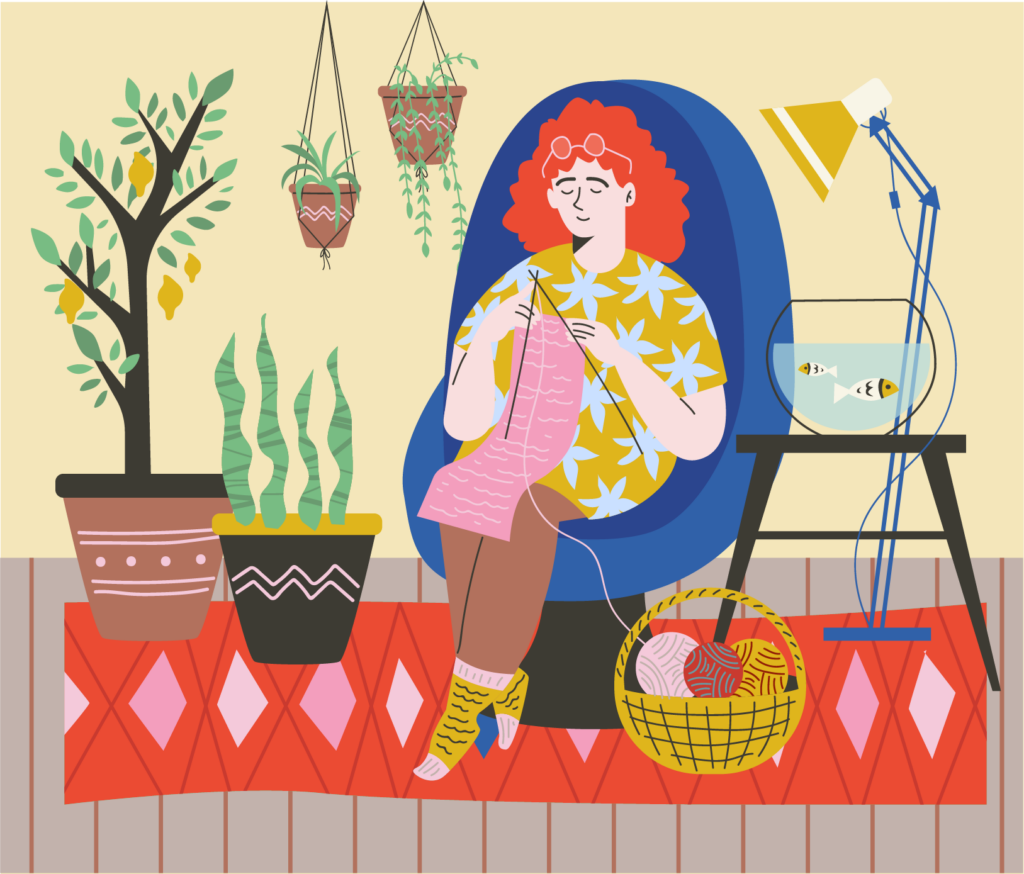
And speaking of gauge… don’t skip over this! Knitting patterns have a “suggested gauge,” which is the number of stitches and rows per inch your work measures. I always recommend knitting a small patch on the suggested needle size for the pattern. If your work is too large or small, adjust the needle size accordingly. I go into more detail on what gauge swatches are and why they matter in another post, so take a look there if you need more info!
Overall, remember that you can do this! Knitting is meant to be a hobby that helps you relax, not something that stresses you out! Start small, be patient with yourself, and know that there’s a whole community of knitters and fiber artists out there that would love to help you — myself included!
Tried any of these knitting patterns? Let me know how it went in the comments below! And don’t forget to pin this post for the next time you need to start a new project!
